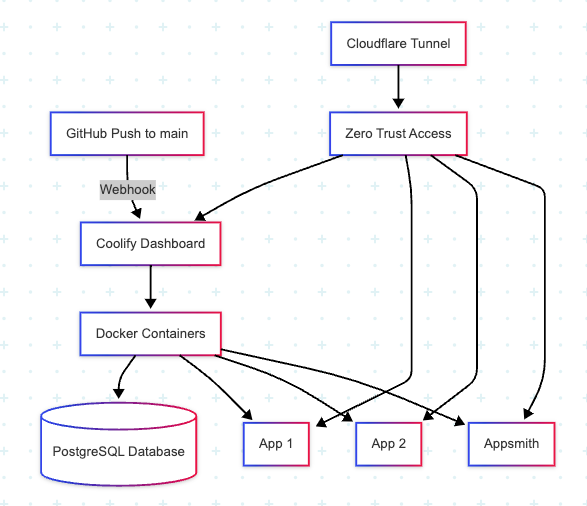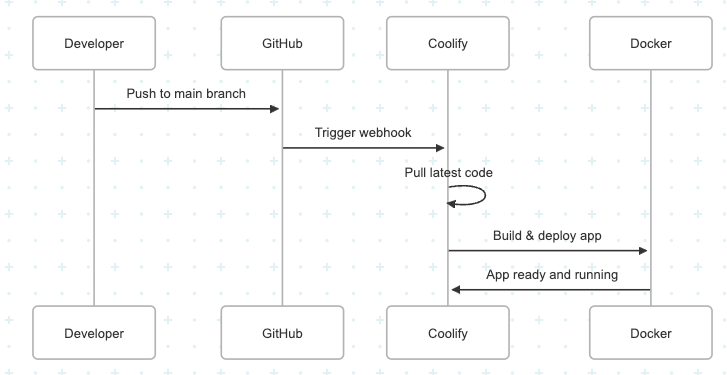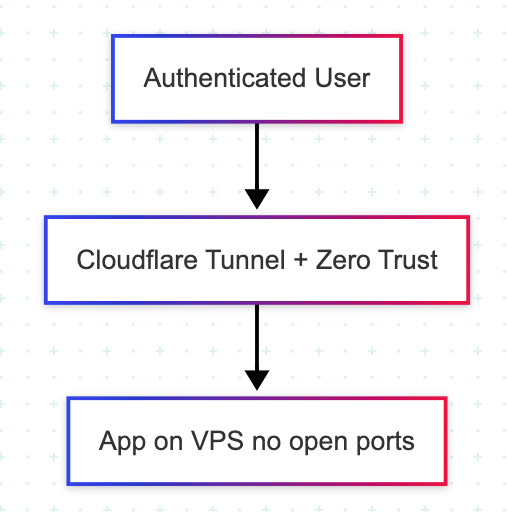How Coolify Changed My Infra
For a long time, my hosting setup was basically non-existent. I had some static websites running through Amazon CloudFront, which is great, especially at my scale where it’s basically free, but anything more complex? I just didn’t have a real solution.
As a student, I often wanted my school projects to stay online 24/7, so I could test in a proper environment, debug when needed, or even show progress to others. Having a unified, production-like environment was the dream, but I didn’t know where to start.
To give you a overview, that's what my infra looks right now:

That changed during a casual conversation with a colleague.
The Spark: A Chat That Changed Everything
We were talking about media setups. I was using Stremio and Real-Debrid at the time, and he mentioned how he ran this whole advanced stack with tools I hadn’t even heard of: Radarr, Sonarr, Prowlarr, etc. That alone intrigued me.
Then he casually dropped Coolify into the mix and started explaining how he used it to manage and deploy everything. Simple UI, GitHub integration, database support, Docker apps, the whole deal. He even showed me his setup.
That was it. I was sold.
First Steps with Coolify
I gave it a shot, and what hit me first was the speed and simplicity.
I clicked on “Add a service,” chose PostgreSQL, the database was ready to go. No weird config files, no digging through Docker Compose docs. It felt and still feel like cheating. I had a production-ready Postgres instance in seconds, and that instantly opened up new possibilities for my projects.
From there, I started deploying my own apps: Go backends, small APIs in Flask, whatever I was working on. And it didn’t just work, it felt good to use.
GitHub Integration That Just Works

One of the things I didn’t expect to enjoy as much as I do is the GitHub integration. Once connected, any push to main triggers a deployment.
I didn’t have to set up custom GitHub Actions or CI/CD pipelines. Coolify just listens for the push and handles it. It’s such a relief when you’re focused on coding and not in the mood to babysit deployments.
Cloudflare Tunnels

Security was something I used to avoid thinking about, mostly because I didn’t know how to approach it properly. Actually I would even say that I don't know how to secure a VPS at all. But with Coolify, I decided to do things cleanly from the start.
I set up a Cloudflare Tunnel with Zero Trust, so my services aren’t exposed publicly. I can access them through secure, authenticated Cloudflare routes. No open ports, no sketchy NGINX / Caddy configs (and I used to do Caddy haha).
Testing Without Commitment
One of the things I’ve come to love the most about this setup is how easy it makes testing.
Want to try a new tool? A different DB? Self-host an app I’ve seen on Reddit? I just deploy it through Coolify, poke around, compare it to alternatives, and either keep it or delete it.
For example, I was exploring alternatives to Retool. I tried several and eventually picked Appsmith, not because someone told me to, but because I was able to run them all side-by-side, see what felt right, and go from there. And I didn’t have to clutter my laptop or deal with VMs.
Conclusion
Before this, I was barely self-hosting anything. Now I run multiple apps, databases, and services on my own infra. Coolify gave me just enough abstraction to make things easy while still letting me understand what’s going on under the hood.
I still use CloudFront for static sites because it’s basically free (for my usage) and reliable, but for everything else,
Coolify is the backbone of my setup.
It’s fast, flexible, and doesn't require me to do any DevOps.
This allows me to manage my current setup of 2 Domain (the current one and upsilon-cloud.uk (.uk is cheap which is great)) and 2 VPS to handle everything I have set up.